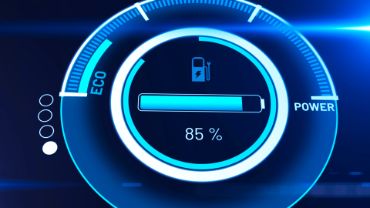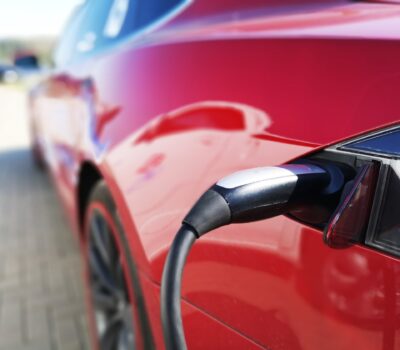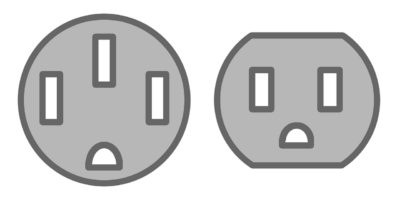Electric vehicle ownership in the mountains
Steamboat Springs is experiencing a huge number of people moving in. Mountain lifestyle, lots of outdoor activities and low building density, especially after COVID have started, brings more and more people than ever before. Among electric vehicle (EV) owners as well as people looking to purchase EV one question pops up more than others. How are they performing in the snow? As with any vehicle, drive train type and tires will play the most significant role. AWD vehicles with winter tires will perform well. It is important to note that most EV manufacturers equip vehicles from the factory with low rolling resistance tires. These tires that have low resistance in summer will have extremely low resistance on snow and ice and will cause vehicle to spin out and get stuck a lot. So the first step is winter tires. This is no different than with any ICE (Internal Combustion Engine) vehicle. Challenge is that most EVs are not offered as AWD so choices are more limited. EVs are typically heavier than their ICE counterparts so FWD vehicles equipped with good winter tires should get you around pretty good if you can stay on the main roads. Another concern with EVs is that most of them are sitting pretty low to the ground in order to increase aerodynamics of the vehicle. This makes it easier to get stuck in deep snow.
 Range is the next thing that needs to be discussed and it is probably the most important one. EV batteries hold considerably less energy per volume than a gas tank does. One US gallon of gas holds 33.7kWh of energy and most EVs have from 60-120kWh batteries with ranges from 120 to 350 miles. Only due to the high efficiency of electric motors this is possible. Having electric motors run efficiently means that there is not much waste heat being generated. Typical ICE vehicle converts 66% of energy from the fuel into heat and only one third is being used to propel vehicle. That is why they are equipped with large radiators and there is a minor change in gas mileage on ICE vehicles between summer and winter. EVs do not have a significant amount of waste heat to warm up cabin air and to do that they need to use battery power and either resistive heater or heat pump. Colder it gets outside, more energy is being used to heat the cabin, thus reducing the total available range. It is a good guess that the winter range will be reduced up to 30% compared to the summer range. If it is really cold and if roads have thick layers of snow or even slush it is possible to lose as much as half of the range, but this is very uncommon. With this being said, the location of the fast DC charging station is critical for EV owners. Currently there are three different types of DC fast chargers, Tesla, ChaDeMo and CCS. Tesla Superchargers are available for Tesla vehicles only, but there is talk of them being opened up for non-Tesla vehicles as early as 2022. ChaDeMo is a Japanese standard that is being phased out and is typically only available on Nissan’s vehicles, while CCS (Combined Charging Standard) is available for all other vehicles. CCS and ChaDeMo are available for Tesla vehicles with a proper adapter. There are plenty of tools and apps that can display the location of the charging station with PlugShare being one of the better ones. Beside the above mentioned DC fast chargers there are two more charging standards that are worth mentioning. First one is the Tesla Destination Charger and the second one is the J1772 charger. Both are Level 2 chargers and with a proper adapter both can be used on any vehicle. These chargers are much slower and they are not suitable for charging during the trips, but are great options for overnight charging in the hotel and after you arrive at the destination if they are close enough. Typical gas stop that includes little mingling in the convenience store is 10 minutes. EV batteries charge fastest when their state of charge is low. If you are comfortable with the range estimate and if you can top off the battery starting at 20% or less, you can be at 45% state of charge after 10 minutes. This is the case for the Tesla Model 3 LR. Other vehicles will vary based on their charging curves. Average driver makes a gas station stop every 1-2 hours and if you use that time to charge while you shop and stretch your legs, battery capacity gets recovered quickly. In North West Colorado Tesla superchargers are spaced closely along major routes and this is possible for Tesla owners. This is not the case for ChaDeMo and CCS chargers. There are fewer of them and most non-Tesla vehicles are not offered with a range above 220 miles making mountain commute inconvenient or even impossible.
Range is the next thing that needs to be discussed and it is probably the most important one. EV batteries hold considerably less energy per volume than a gas tank does. One US gallon of gas holds 33.7kWh of energy and most EVs have from 60-120kWh batteries with ranges from 120 to 350 miles. Only due to the high efficiency of electric motors this is possible. Having electric motors run efficiently means that there is not much waste heat being generated. Typical ICE vehicle converts 66% of energy from the fuel into heat and only one third is being used to propel vehicle. That is why they are equipped with large radiators and there is a minor change in gas mileage on ICE vehicles between summer and winter. EVs do not have a significant amount of waste heat to warm up cabin air and to do that they need to use battery power and either resistive heater or heat pump. Colder it gets outside, more energy is being used to heat the cabin, thus reducing the total available range. It is a good guess that the winter range will be reduced up to 30% compared to the summer range. If it is really cold and if roads have thick layers of snow or even slush it is possible to lose as much as half of the range, but this is very uncommon. With this being said, the location of the fast DC charging station is critical for EV owners. Currently there are three different types of DC fast chargers, Tesla, ChaDeMo and CCS. Tesla Superchargers are available for Tesla vehicles only, but there is talk of them being opened up for non-Tesla vehicles as early as 2022. ChaDeMo is a Japanese standard that is being phased out and is typically only available on Nissan’s vehicles, while CCS (Combined Charging Standard) is available for all other vehicles. CCS and ChaDeMo are available for Tesla vehicles with a proper adapter. There are plenty of tools and apps that can display the location of the charging station with PlugShare being one of the better ones. Beside the above mentioned DC fast chargers there are two more charging standards that are worth mentioning. First one is the Tesla Destination Charger and the second one is the J1772 charger. Both are Level 2 chargers and with a proper adapter both can be used on any vehicle. These chargers are much slower and they are not suitable for charging during the trips, but are great options for overnight charging in the hotel and after you arrive at the destination if they are close enough. Typical gas stop that includes little mingling in the convenience store is 10 minutes. EV batteries charge fastest when their state of charge is low. If you are comfortable with the range estimate and if you can top off the battery starting at 20% or less, you can be at 45% state of charge after 10 minutes. This is the case for the Tesla Model 3 LR. Other vehicles will vary based on their charging curves. Average driver makes a gas station stop every 1-2 hours and if you use that time to charge while you shop and stretch your legs, battery capacity gets recovered quickly. In North West Colorado Tesla superchargers are spaced closely along major routes and this is possible for Tesla owners. This is not the case for ChaDeMo and CCS chargers. There are fewer of them and most non-Tesla vehicles are not offered with a range above 220 miles making mountain commute inconvenient or even impossible.
 Final thing to discuss regarding EVs in the winter of North West Colorado is outdoor charging. Is it safe? Is it OK to have a charging cord wet from rain or snow? Most manufacturers recommend vehicles to be plugged in when not in use. This is not a must. If you live in the condo your vehicle will be fine not being plugged in every day, but if you can your charger will top off the battery and provide power to precondition the vehicle if you choose so. While it is best to protect the charger from snow and rain, they are designed to be used outdoors and they will not get damaged if they get wet. Bigger concern with snow is accumulation around the charging door and charging port. Try to keep it clean for the charging door to operate properly and do not allow water to freeze inside the charging port as you might not be able to plug in your charger next time. All chargers are equipped with ground fault protection. Similarly as with your GFCI bathroom outlet, if fault is detected charging will be stopped and fault indicator will flash.
Final thing to discuss regarding EVs in the winter of North West Colorado is outdoor charging. Is it safe? Is it OK to have a charging cord wet from rain or snow? Most manufacturers recommend vehicles to be plugged in when not in use. This is not a must. If you live in the condo your vehicle will be fine not being plugged in every day, but if you can your charger will top off the battery and provide power to precondition the vehicle if you choose so. While it is best to protect the charger from snow and rain, they are designed to be used outdoors and they will not get damaged if they get wet. Bigger concern with snow is accumulation around the charging door and charging port. Try to keep it clean for the charging door to operate properly and do not allow water to freeze inside the charging port as you might not be able to plug in your charger next time. All chargers are equipped with ground fault protection. Similarly as with your GFCI bathroom outlet, if fault is detected charging will be stopped and fault indicator will flash.
In jurisdictions like Steamboat Springs, where 2021 electrical codes have been adopted all new homes need to be EVSE (Electric Vehicle Supply Equipment) ready. EVSE devices are what we incorrectly call chargers. They inform the vehicle how much power it can use from the power source and ensure that charging is performed in a safe manner. Here at Mountain Contracting we are going one step further than what code requirement is. EVSE ready means that there is panel capacity and raceway (conduit) to later install wiring and breaker for electric vehicle charger. We are equipping our new homes with NEMA 14-50 outlet that will allow for up to 40A of charge current at 240V (Level 2 charging). A general purpose 120V outlet is also available in the garage for the 120V level 1 charging. While not all electric vehicles come with a charger (or to be correct EVSE) any more, they are available with either NEMA 14-50 plug or with an adapter for NEMA 14-50 outlet. If more than one vehicle needs to be charged some manufacturers offer two port chargers that can split power from the supplying outlet. This allows both vehicles to charge simultaneously, but at slower speed. Most homes do not have enough electrical capacity to charge two vehicles simultaneously at high speed. If you have any questions regarding this any electrical contractor will be able to do load calculation and to show how much power is available for charging.
Here at Mountain Contracting we are going one step further than what code requirement is. EVSE ready means that there is panel capacity and raceway (conduit) to later install wiring and breaker for electric vehicle charger. We are equipping our new homes with NEMA 14-50 outlet that will allow for up to 40A of charge current at 240V (Level 2 charging). A general purpose 120V outlet is also available in the garage for the 120V level 1 charging. While not all electric vehicles come with a charger (or to be correct EVSE) any more, they are available with either NEMA 14-50 plug or with an adapter for NEMA 14-50 outlet. If more than one vehicle needs to be charged some manufacturers offer two port chargers that can split power from the supplying outlet. This allows both vehicles to charge simultaneously, but at slower speed. Most homes do not have enough electrical capacity to charge two vehicles simultaneously at high speed. If you have any questions regarding this any electrical contractor will be able to do load calculation and to show how much power is available for charging.


